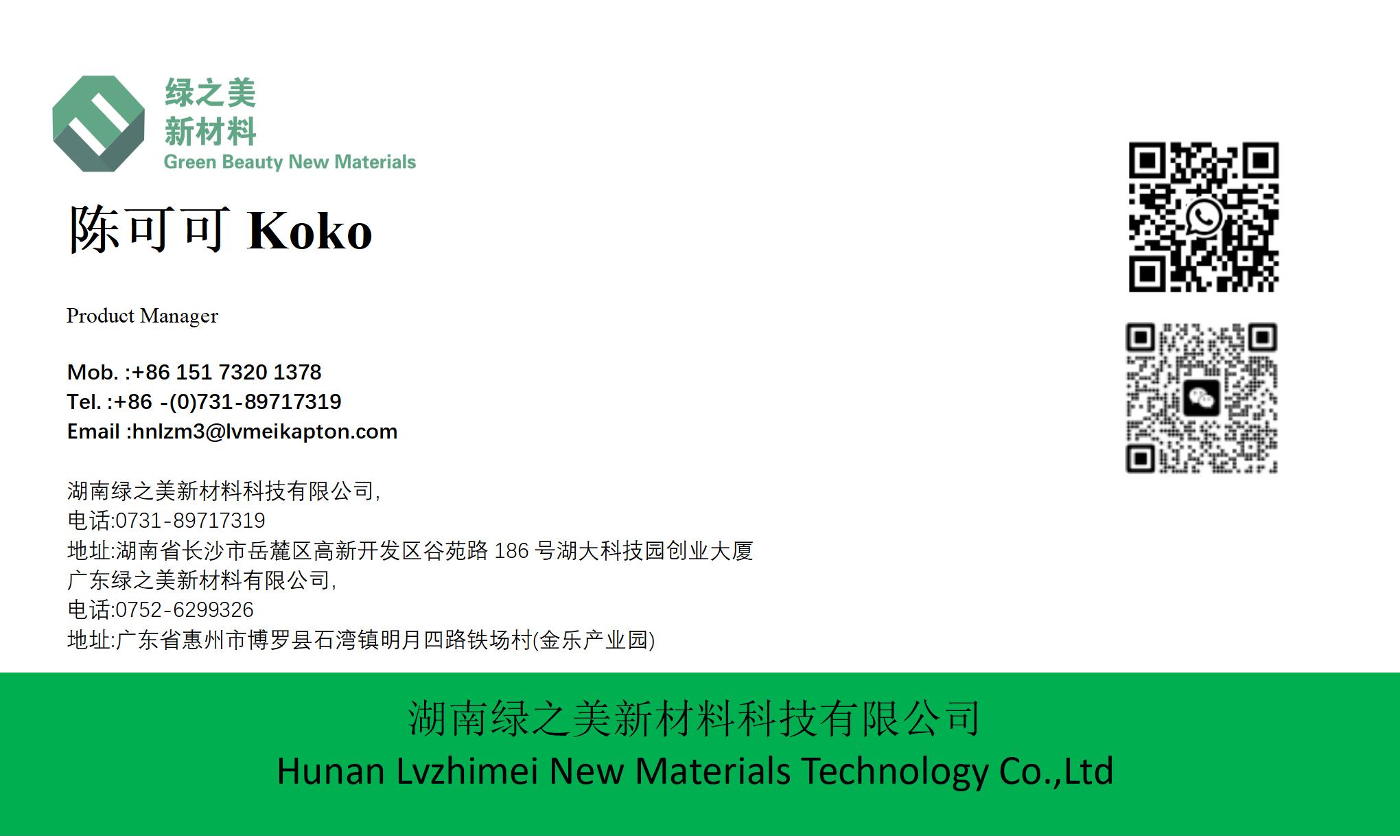hnlzm@lvmeikapton.com
+86 13787123465


Hunan Lvzhimei New Material Technology Co., Ltd.


NameDescriptionContent
What Are the Sustainability Features of Modern Gold Finger Polyimide Tapes? |https://www.lvmeikapton.com/
Source:
|
Author:Koko Chan
|
Published time: 2025-07-23
|
22 Views
|
Share:
This article explores sustainability in modern gold finger polyimide tapes, focusing on recyclability, reduced waste, and eco-friendly materials. It includes "Strong adhesion and blocking high temperature tape", "lvmeikapton insulating electrical tape", and others, highlighting how they minimize environmental impact.
As electronics manufacturing shifts toward sustainability, gold finger polyimide tapes—including "Strong adhesion and blocking high temperature tape", "PI material high temperature resistant 300 tape", and "lvmeikapton insulating electrical tape"—are evolving to reduce environmental impact. These tapes, critical for protecting gold fingers, now integrate features like recyclability, low-VOC formulations, and biodegradable components, aligning with green manufacturing goals.
As electronics manufacturing shifts toward sustainability, gold finger polyimide tapes—including "Strong adhesion and blocking high temperature tape", "PI material high temperature resistant 300 tape", and "lvmeikapton insulating electrical tape"—are evolving to reduce environmental impact. These tapes, critical for protecting gold fingers, now integrate features like recyclability, low-VOC formulations, and biodegradable components, aligning with green manufacturing goals.

I
Recyclable Materials are a key advancement. Traditional polyimide tapes often use non-recyclable adhesives and backings, complicating PCB recycling. Modern "lvmeikapton insulating electrical tape" uses silicone adhesives compatible with PCB recycling processes: when gold finger PCBs are shredded for material recovery, the adhesive separates cleanly from gold and copper, allowing 95% of metals to be reused. In contrast, rubber-adhesive tapes contaminate 20–30% of recycled metals, reducing their value.
Low-VOC Formulations reduce air pollution. "PI material high temperature resistant 300 tape" is now manufactured with low-volatile organic compound (VOC) adhesives, emitting <5g/L of VOCs during curing—far below the 50g/L industry average. This matters in high-volume facilities, where tape application and removal can release harmful fumes. "Strong adhesion and blocking high temperature tape" with low-VOC silicone adhesives meets strict EU REACH standards, making it suitable for eco-certified electronics like energy-efficient appliances.
Extended Lifespan cuts waste. Gold finger polyimide tapes now last longer in storage and use, reducing replacement rates. "Self-adhesive back blocking spray paint tape" retains adhesion for 24 months in dry storage, double the lifespan of older formulations. In manufacturing, this means fewer expired tapes discarded, lowering landfill waste. For example, a smartphone factory using the new tape reduced tape waste by 35% annually, saving 10 tons of non-biodegradable material.
Biodegradable Blends are emerging for non-critical steps. While "PI material high temperature resistant 300 tape" remains non-biodegradable (due to heat-resistance needs), "Adhesive PET material high temperature tape" now uses plant-based PET blends that decompose in industrial composting within 180 days. These are used for secondary steps like masking non-gold finger areas, reducing waste in PCB recycling. A trial with 10,000 PCBs found that biodegradable PET tape left no residue after composting, simplifying gold recovery.
Energy-Efficient Production lowers carbon footprints. Manufacturers of "Brown circuit board high temperature tape" have optimized production, cutting energy use by 20% via solar-powered factories and recycled water systems. This reduces the tape’s carbon footprint from 8kg CO₂e/roll to 6.4kg, aligning with electronics brands’ net-zero goals.
The table below compares sustainability features across key tapes:
Tape Variant | Recyclable? | VOC Emissions | Lifespan (Storage) | Carbon Footprint |
"lvmeikapton insulating electrical tape" | Yes (adhesive separates) | <5g/L | 24 months | 6.8kg CO₂e/roll |
"PI material high temperature resistant 300 tape" | Yes | <5g/L | 36 months | 7.2kg CO₂e/roll |
"Adhesive PET material high temperature tape" (biodegradable) | Compostable | <10g/L | 18 months | 5.5kg CO₂e/roll |
Traditional Rubber-Adhesive Tape | No | 60g/L | 12 months | 9.0kg CO₂e/roll |
Practical Impact is evident in case studies. A European PCB manufacturer switched to "Strong adhesion and blocking high temperature tape" with low-VOC adhesives, reducing workplace air pollution by 40% and passing eco-certification audits. A US electronics recycler using biodegradable "Adhesive PET material high temperature tape" increased gold recovery efficiency by 15%, as the tape decomposed during processing, eliminating manual peeling.
Challenges remain: extreme heat resistance still requires non-biodegradable polyimides, and recyclability depends on proper separation. However, innovations in gold finger polyimide tapes are clear steps toward sustainable electronics, proving performance and eco-friendliness can coexist


Hunan Lvzhimei New Material Technology Co., Ltd.
Quick Links
Product Categories
© 2024 Hunan Lvzhimei New Material Technology Co., Ltd.All Rights Reserved. Designed by Erge
0731 - 89717319
hnlzm@lvmeikapton.com
+86 13787123465
Room 502, Chuangye Building, No186, Guyuan Road, High-Tech District, Changsha, Hunan, China
CONTACT



